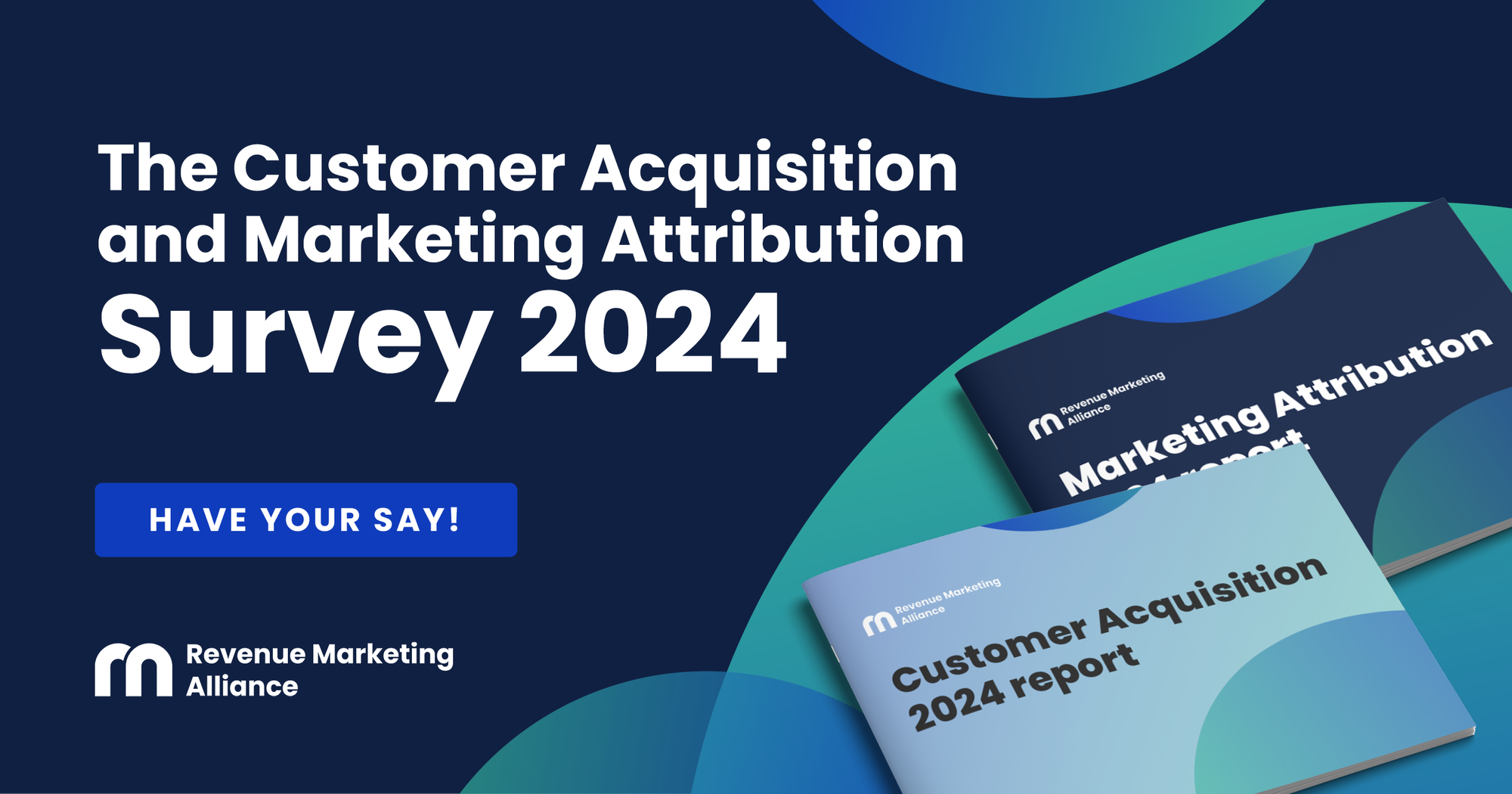Choosing the right key performance indicators (KPIs) for any marketing strategy can get messy fast. And tracking KPIs can seem about as exciting as watching paint dry.
But, having clear visibility into customer acquisition metrics is crucial for any business looking to grow. When leveraged effectively, KPIs become the secret sauce that takes your customer acquisition strategy from bland to bold.
In this article, we'll demystify the jargon around metrics and cut through the confusion to highlight the most important KPIs for optimizing customer acquisition. We'll discuss:
- The importance of customer acquisition in revenue marketing
- What are KPIs in customer acquisition?
- Five essential KPIs in customer acquisition
- Implementing KPIs in customer acquisition strategies
With the right KPI foundations in place, you can transform vague notions of whether your marketing campaigns are "working" into a lean, mean, fully-optimized, numbers-driven customer acquisition machine.
So, let's dive in and level up your customer acquisition analytics game.
The importance of customer acquisition in revenue marketing
The better (or, at least, shorter) question should likely be: When isn’t customer acquisition important in revenue marketing? But let’s try and look into this properly, but as concisely as we can.
For one, growing the customer base is key for scaling revenue. The more customers a company has, the more revenue potential there is. Acquiring new customers expands the total addressable market, which is the total revenue opportunity for a product or service.
Famously in business, it costs more to acquire a new customer than to retain an existing one. But, you need to acquire customers first in order to retain them! Focusing on customer acquisition early on allows companies to get customers at a lower cost before saturation makes it more expensive.
Also, new customer acquisition provides data to optimize for retention and monetization. Understanding how and why new customers convert allows companies to refine targeting and messaging to improve conversion rates.
Customers expand revenue channels, whether it's upselling existing offerings or providing new products and services. A larger customer base provides more opportunities to generate revenue.
Not to mention, there are network effects in customer acquisition. As the customer base grows, things like word-of-mouth and viral growth become possible, accelerating new customer acquisition. And finally, acquiring customers builds market share, especially in competitive markets. Focusing on customer acquisition lets companies gain market share against rivals.
Overall, more customers means more revenue potential, simple as that.
Ultimately, growing a sizable customer base through acquisition is the foundation for scaling revenues. The lifetime value of acquired customers far outweighs acquisition costs, so it is a key focus area for revenue marketers.
What are KPIs in customer acquisition?
Customer acquisition KPIs provide the quantifiable, actionable data needed to continuously improve performance. They are essential for:
- Measuring the effectiveness of your acquisition efforts,
- Identifying improvement opportunities,
- Informing strategic decisions,
- Benchmarking your performance,
- Maximizing lifetime value, and
- Gaining a competitive advantage.
Effectively, they are essential for making strategic decisions that maximize return on acquisition investments. So let’s take a look at some of the KPIs you should consider measuring for your customer acquisition efforts.
5 essential KPIs in customer acquisition
Below are five of the most important KPIs you should be measuring - or at least consider measuring - for your customer acquisition.
Customer acquisition cost (CAC)
Customer acquisition cost (CAC) measures how much it costs to acquire a new customer. It be calculated in various ways, for example: total sales and marketing spend divided by total new customers in a given period. It's important to segment CAC by acquisition channel as well to understand the cost efficiency of each.
Conversion rates
Conversion rates measure the percentage of prospects that convert into paying customers. This measures the effectiveness of acquisition funnels. Improving the conversion rate means acquiring customers more efficiently.
This can be measured for various steps in the acquisition funnel, for example:
- Website visitors to leads captured,
- Leads to sales qualified leads, or
- Trials to paying customers.
Optimizing each conversion step incrementally improves acquisition so it’s an important one to consider.
Customer lifetime value (CLV)
Customer lifetime value, or CLV, represents how much revenue a customer will generate over their entire relationship with the company. There are different models to estimate this, such as the basic average order value x purchase frequency x customer lifetime. More advanced models incorporate discounts, referrals, churn rates, etc.
The goal is to maximize CLV relative to CAC. This means acquiring customers in a way that their lifetime value far exceeds the cost of acquiring them. For example, if the CAC to acquire a customer is $100 but the CLV of that customer is $500 over their lifetime, that's a favorable ratio.
The higher the CLV is compared to CAC, the more profitable each acquired customer is. So, you want the CLV:CAC ratio to be as high as possible.
Return on investment (ROI)
Return on Investment (ROI) measures the profitability of investment in customer acquisition. It is calculated as: (Gain from investment - Cost of investment) / Cost of investment.
The gain from investment is the new revenue that acquired customers generate over a period of time. This can be measured as the total revenue from acquired customers over a given timeframe.
The cost of investment is the total expenses involved in acquiring those customers, such as advertising costs, sales team costs, promotional offers, etc.
Churn rate
Churn rate is the rate at which customers stop doing business with the company over time. Churn needs to be minimized to maximize the value derived from acquired customers. Typically measured as net customer churn rate - the percentage of customers lost in a period minus new customers acquired. This indicates both retention and acquisition performance.
Implementing KPIs in customer acquisition strategies
Select the most relevant KPIs
Evaluate your business model, goals, and capabilities to determine the three to five most important acquisition KPIs to focus on first. We have listed the five most common KPIs above, check them to see which would be most relevant to you and your current business goals. Make sure that you choose metrics that will be most impactful.
Set up tracking and measurement
Once you've selected the key acquisition KPIs, the next step is setting up the tracking and measurement needed to monitor them regularly. Ensure you have the right analytics tools and data pipelines in place and outline the calculation methodology and required data inputs for each KPI.
For example, calculating CAC requires linking marketing costs to specific customer cohort data. You can set up dashboards to regularly update each KPI which makes it easier to track. This is important because tracking the metrics consistently allows you to benchmark performance over time to see what is working and what isn’t.
Establish benchmarks and targets
With measurement in place, you then need to baseline the current performance for each KPI. For a new CAC or conversion rate KPI, understand what is realistic based on past data or industry benchmarks.
Then, set specific, measurable targets for improving each KPI over a set timeframe, such as lowering CAC by 10% quarterly. Targets provide goals to drive acquisition programs and investments towards. But remember, it takes time to move KPIs substantially. So, you must set aggressive but attainable targets.
Monitor your KPIs closely
Ongoing monitoring of the acquisition KPI dashboards is required to keep a pulse on performance. So, make sure to set up alerts and notifications to be aware of any significant changes in real-time.
Then, you can review these KPIs frequently with your marketing and sales teams to discuss trends you’re noticing and dig deeper into the factors impacting performance. Regular review helps to make timely decisions to optimize acquisition programs. And having data visibility enables a more proactive response.
Identify insights and opportunities
Next, it’s important to leverage your KPI data to identify strategic insights and opportunities to improve acquisition and analyze the performance trends over time. Look for channels, campaigns, or segments where CAC is decreasing or conversion is improving.
Then, you can diagnose channels or offers with declining ROI and use statistical analysis to test for significance. The goal is to spot strengths and weaknesses, and find “quick wins” you can act on quickly. With this, make sure to always connect your insights back to the KPI benchmarks and targets you put in place.
Operationalize your findings
The real power of KPIs comes from turning insights into action. So, use your data-driven findings from the KPI analysis to optimize acquisition investments, reallocate budgets to better-performing channels, adjust creative messaging, fix conversion funnel bottlenecks, and so on.
The goal here is to show how optimizing Channel X based on its KPI trend can lift overall CAC. Tie your actions directly to benchmarks and targets that you initially set. It’s important to note that your KPIs inform your strategy, but must ultimately connect to execution.
Expand your KPI tracking
Once your foundational acquisition KPI measurement system is working smoothly, look to expand tracking to more advanced metrics over time. KPIs like customer lifetime value, retention rate, channel costs, and sales cycle length add dimensionality. Building a robust, nuanced KPI tracking program takes time but pays dividends in terms of continuously optimized customer acquisition.
The most important thing to remember is just be sure to crawl before walking when adding new metrics.
Psst... now's your chance to influence the most important conversations in revenue marketing
How do leading marketers drive growth? What channels attract and convert customers? Where should budgets be allocated? What metrics matter most?
Our groundbreaking 2024 Customer Acquisition and Marketing Attribution Survey will reveal the inner workings of today's state-of-the-art revenue engines. And you can help uncover the key insights.
The insights gained will be invaluable for staying ahead of rapid changes in 2024.
This is your exclusive opportunity to shed light on:
- Current marketing attribution models and challenges
- The evolving customer journey to purchase
- How teams track and optimize funnel performance
- Emerging strategies to connect with modern buyers
- Key focus areas for growth in 2024
… And a whole lot more.
Take the survey, and at the end, receive a comprehensive Customer Journey framework slide deck to help you and your team acquire more customers with less stress! 👇




 Follow us on LinkedIn
Follow us on LinkedIn


